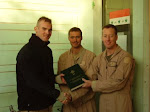
The psalms are what make the breviary so beautiful and at the same time so difficult. Knowing how to pray them properly is essential for benefitting fully from the Divine Office. First of all, they are prayers, songs from ancient times, compositions based on Jewish patterns of thought. Moreover, we have to read them in translation. Granted that the psalms are inspired poetry, how are we to make them the expression of our own prayer life? A food that cannot be assimilated will never be a source of nourishment. How can we learn to assimilate the nourishment provided by the psalms?
There is no point in denying that the question is a hard one to answer. Nor is it possible to deny the fact that many a person who is obliged to pray the breviary has long since found that the unaccustomed fare of the psalms has (excuse the expression) quite turned his stomach, that he is unable to derive any spiritual nourishment from them. Still I maintain that it is possible to overcome these difficulties. It is obvious enough that some of the psalms are easy to assimilate into our spiritual life, while others are much more difficult. None of them, however, are impossible with proper effort. The psalter is and will remain the many-stringed harp upon which we can sound all the chords of our prayer life and from which we can draw out all the deep notes of our heart. But first we must learn how to play the harp; that requires time and attention.
It is hardly necessary to speak at any great length about the aesthetic value of the psalms. The psalter contains songs that deserve a place of special honour in the literature of the world. Nor need it be pointed out that the psalms ought to be especially dear to a Christian for having been prayed by our Lord Jesus Christ and the apostles, for being the first prayers used in Christian liturgy.
—Fr. Pius Parsch (from Der Wochenpsalter des Römischen Breviers)
(Photo: Late 15th-century breviary of Mary Stuart, Queen of Scots, as preserved in the Russian National Library of Saint Petersburg. Inscriptions by her hand may be seen on the margins.)










